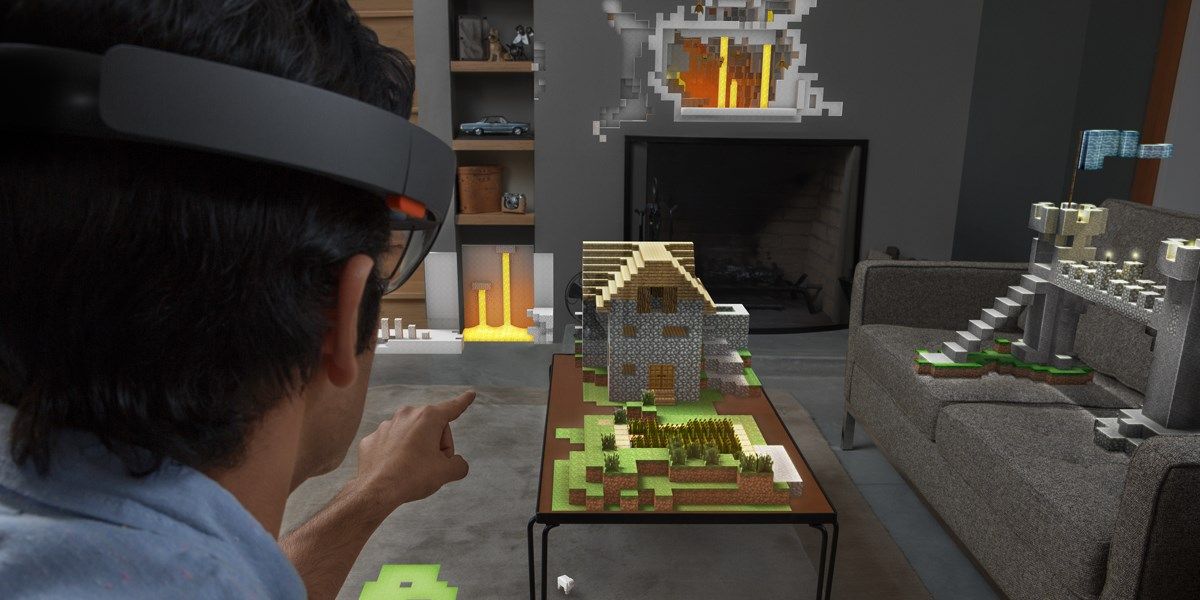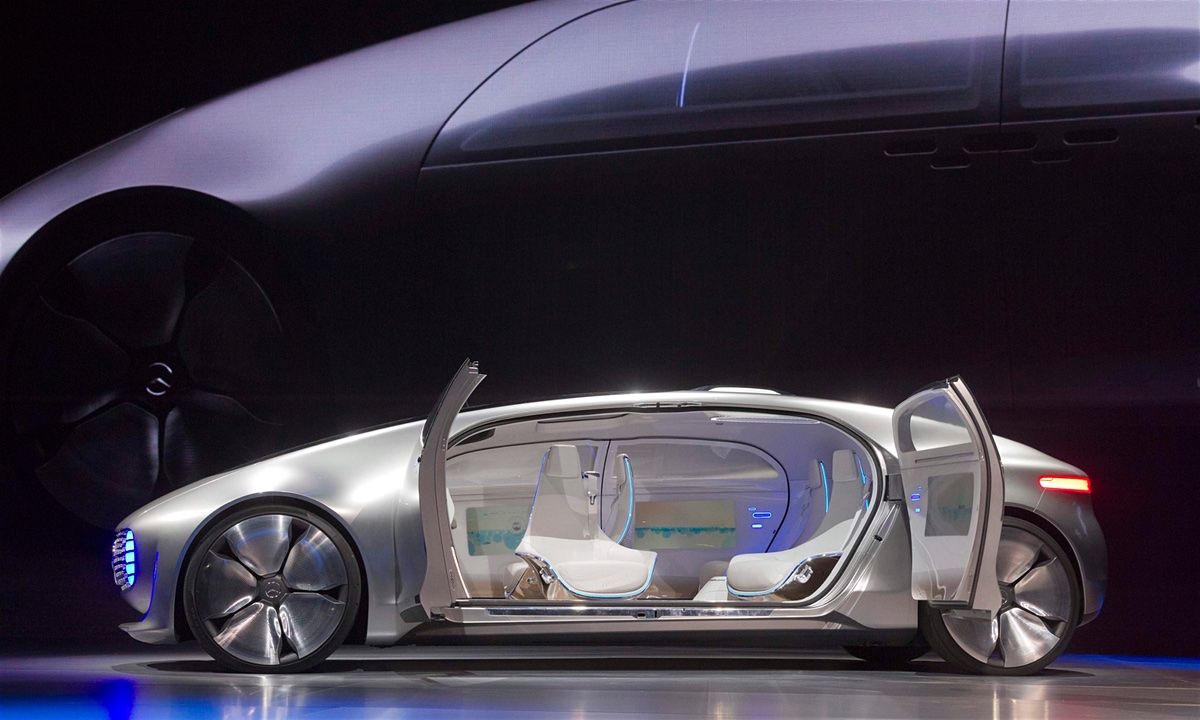Speaking at Salesforce’s Dreamforce 2015 conference, Microsoft CEO Satya Nadella shared updates on the company’s HoloLens holographic headset-based computing technology.


Speaking at Salesforce’s Dreamforce 2015 conference, Microsoft CEO Satya Nadella shared updates on the company’s HoloLens holographic headset-based computing technology.
https://youtube.com/watch?v=erjo8yfyD9w
The self-driving vehicle revolution has gotten underway in the UK, with the first of a number of automated ‘pod’ trial vehicles unveiled to the public in Milton Keynes this week.
The LUTZ (Low-carbon Urban Transport Zone) Pathfinder is a diminutive electric-powered two-seater that’s about half the length of an ordinary car. If you feel the need for speed, however, you may want to look elsewhere for now. The Pathfinder is designed for use in pedestrianised areas, with a top speed of just 24 km/hr.
One of the vehicle’s main purposes is to help people who wouldn’t otherwise have access to a car to get around in urban environments, such as the young or elderly, disabled people, or simply those who don’t own a vehicle.

The future of household robots owes a lot to 19th century American explorers Lewis and Clark.
At least, that’s what iRobot CEO Colin Angle told a crowd of reporters at a press event in New York on Sept. 16, introducing the Roomba 980, iRobot’s newest trashcan-lid-shaped vacuuming robot. It may look like every other Roomba the company has released over the past decade or so, but this one has a new trick: It knows how to map out its surroundings and find its way home.
“Roomba’s mission is to clean, which is not as exciting as Lewis and Clark,” Angle said, “But nonetheless very important.”


CEO of parent company, Damiler, says Mercedes premium driverless cars are a ‘concrete development goal’.

https://en.wikipedia.org/wiki/Multi-armed_bandit
In probability theory, the multi-armed bandit problem (sometimes called the K- or N-armed bandit problem) is a problem in which a gambler at a row of slot machines (sometimes known as “one-armed bandits”) has to decide which machines to play, how many times to play each machine and in which order to play them. When played, each machine provides a random reward from a distribution specific to that machine. The objective of the gambler is to maximize the sum of rewards earned through a sequence of lever pulls.
(Phys.org)—A combined team of researchers from France and Japan has created a decision-making device that is based on basic properties of quantum mechanics. In their paper published in Scientific Reports (and uploaded to the arXiv preprint server), the team describes the idea behind their device and how it works.
There is a classic decision-making problem that is known as the exploration-exploitation dilemma—it is typically described by suggesting a scenario where a gambler faced with a floor full of slot machines must decide which offers the best payout on a regular basis. In real life, the solution involves feeding all of the machines coins until a discernible pattern emerges. Computer algorithms have been developed to run essentially the same process. Now, however, that approach appears to be ready for an update, as the researchers with this new effort have come up with a way to run the same sort of algorithm without using any kind of computer. Instead, they use a laser, a photon detector and feedback device. The idea is based on the fact that quantum mechanics laws are probabilistic in nature.
The device is based on prior research that has shown that if photons are fired from a proton gun at a 45 degree angle, they will each have an equal chance of being vertically or horizontally polarized when they strike a detector—thus a stream will have equal numbers of both. But, if the filter on the gun is changed slightly, to say fire at 44 or 46 degree angles, that increase the odds of the associated polarization. The team used that fact by adding a feedback loop to the system—data sent back representing a “win” on a slot machine caused the filter to move in one direction, while a loss moved it in the other. Over time, the preponderance of wins (indicating a learning process) from one virtual machine would drive the device towards indicating it was the winning choice.
Boeing has announced that the ABS–3A, the world’s first all-electric propulsion satellite, has commenced its tour of duty.
The communications satellite is being operated by ABS, a Bermuda-based satellite network that provides TV, Internet, and cellular services across the world. Unlike conventional satellites, which have mostly used propellant systems that burn chemicals of one kind or another to get about the place, the ABS–3A makes use of a xenon-ion propulsion system to achieve thrust.
Specifically, the all-electric propulsion system uses electron bombardment to create xenon ions, which are then expelled by the spacecraft, producing thrust in the opposite direction.

Researchers at MIT and Boston Children’s Hospital have developed a system that can take MRI scans of a patient’s heart and, in a matter of hours, convert them into a tangible, physical model that surgeons can use to plan surgery.
The models could provide a more intuitive way for surgeons to assess and prepare for the anatomical idiosyncrasies of individual patients. “Our collaborators are convinced that this will make a difference,” says Polina Golland, a professor of electrical engineering and computer science at MIT, who led the project. “The phrase I heard is that ‘surgeons see with their hands,’ that the perception is in the touch.”
This fall, seven cardiac surgeons at Boston Children’s Hospital will participate in a study intended to evaluate the models’ usefulness.

In what may seem like a Hollywood blockbuster, Defense Advanced Research Projects Agency (DARPA) has developed an implant that goes directly onto the human brain.
The agency wrote in a statement their device is showing promise with improving patient’s memory tests scores. It is “raising hope that such approaches may someday help individuals suffering from memory deficits as a result of traumatic brain injury or other pathologies.”
DARPA’s Restoring Active Memory (RAM) program presented their preliminary findings at the ‘Wait, What? A Future Technology Forum,’ which is also hosted by the agency at St. Louis.

“People who are raised in the industrial world and who get enthused about systems thinking are likely to make a terrible mistake. They are likely to assume that here, in systems analysis, in interconnection and complication, in the power of the computer, here at last, is the key to prediction and control. This mistake is likely because the mindset of the industrial world assumes that there is a key to prediction and control.”